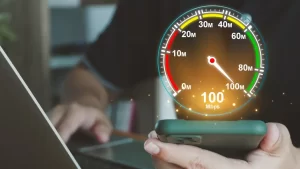A Comprehensive Review of R-Drive Image 7.2: A Reliable Backup Solution
In today’s world, with numerous backup tools available, it’s easy to assume that paying for backup software is unnecessary.

In today’s world, with numerous backup tools available, it’s easy to assume that paying for backup software is unnecessary. After all, there are many free options that promise to do the job. However, in my experience, R-Drive Image, priced at $45, stands out as the only backup solution I’ve used that has consistently delivered when it mattered the most. It’s even my tool of choice for backing up other backups, and when dealing with failing media, I trust R-Drive Image to recover crucial data. If you’re already familiar with the software and want to know about the new features in version 7.2, you can skip to the “What’s New…” section.
What R-Drive Image Does Best
R-Drive Image is fundamentally built around creating drive and partition images—essentially full copies of your disk or its subdivisions, including boot records. These images are vital for disaster recovery and come in various formats: full (capturing all data), incremental (capturing all changes since the last image), and differential (capturing all changes since the initial full image). The resulting images can be stored in R-Drive Image’s proprietary format, or in more common formats like Microsoft’s VHD/VHDX. Higher-end versions also support VMDK for virtualization.
One of R-Drive Image’s most convenient features is its ability to verify images, restore them completely, clone disks from one to another, and mount proprietary images as virtual disks. This allows users to browse and recover individual files and folders using Windows Explorer. Windows can natively mount VHD/VHDX formats, but R-Drive Image can mount those as well, adding extra flexibility for recovery operations.
Backup Options for Every Scenario
While many users will only need to create full disk or partition backups for disaster recovery, R-Drive Image provides the option to back up selected files and folders. This can be incredibly useful for fast backups of essential data. These file and folder backups, however, are not suitable for disaster recovery because they do not capture critical partition or boot information. But they can drastically reduce storage needs and backup times.
R-Drive Image supports a variety of file systems, including Microsoft’s FAT, NTFS, and exFAT, Apple’s HFS/HFS+ and APFS, and even Linux file systems like UFS and Ext4. If you need to back up file systems that aren’t natively supported, R-Drive Image can perform a byte-by-byte copy of the data, although it won’t allow file-level access or previews.
The program also supports both hardware RAID (as single volumes) and software RAID configurations from Windows, Apple, and Linux, ensuring compatibility with a broad range of setups.
Bootable Recovery Media
For disaster recovery, R-Drive Image can create bootable recovery media based on either WindowsPE (Windows 10 Pre-install Environment) or Linux. The WindowsPE boot disc is especially valuable for booting systems with Secure Boot enabled, which might otherwise pose compatibility issues with other recovery tools. From the bootable media, you can use either the modern Windows-style GUI or a more traditional DOS-like interface (available on Linux boot discs).
Flexible Storage Options
R-Drive Image offers a wide variety of storage options for saving backups, including local drives, network locations, and even cloud storage services like OneDrive, Dropbox, and Google Drive. The program can also burn CDs and DVDs for booting and backup purposes—a feature still relevant for corporate archiving in some environments.
The software can also send email notifications upon job completion and allows users to run additional programs based on the success or failure of backup operations. For instance, if a file or disk error occurs, R-Drive Image can bypass the issue and continue the process, making it highly reliable for recovering data from problematic media.
Scheduling and Resource Management
Another noteworthy feature is the ability to schedule backups using Windows’ built-in task scheduler, rather than forcing users to adopt a third-party scheduler. It’s also reassuring that R-Drive Image does not collect ongoing telemetry data from users, which some may find important when working with sensitive data.
Additionally, R-Drive Image includes a partition manager that allows you to manage partitions without leaving the program. You can delete, resize, or secure wipe partitions, and even convert partition layouts between MBR (Master Boot Record) and GPT (GUID Partition Table), depending on your system’s needs. AES-XTS image encryption is supported to ensure the security of backup data.
New Features in Version 7.2
One of the standout new features in R-Drive Image 7.2 is the ability to write backup images directly to cloud storage services like OneDrive, Dropbox, and Google Drive. This offers a more streamlined cloud backup process, though it’s worth noting that adding these cloud destinations is done when defining a backup task rather than from the main preferences dialog. A more intuitive location for this would be ideal, but it’s a minor gripe in an otherwise solid feature set.
Additionally, version 7.2 introduces image replication—allowing users to copy the backup image to multiple secondary locations after the initial backup. This feature is a game-changer for users who want extra redundancy without having to create separate backup tasks. Importantly, even when backing up to online storage, the initial image is created locally, which prevents the need to download it again for replication, saving on bandwidth.
Another new feature is differential file and folder backups, allowing R-Drive Image to only copy new or changed files since the original backup, rather than backing up all data again. This greatly improves the efficiency of incremental backups and reduces storage requirements.
Performance and Reliability
In my tests, R-Drive Image has proven to be both fast and reliable. The program’s estimated backup times can be a bit optimistic, but in my experience, the transfer rates and performance are generally on par with other solutions. R-Drive Image has no issue handling legacy hardware, and its minimum system requirements make it an excellent choice even for older systems.
R-Drive Image is my go-to choice for disk imaging and disaster recovery. The ability to replicate images to multiple destinations, including cloud services, and the addition of differential file and folder backups make it an even more powerful tool than before. Though I encountered minor issues with early builds, R-Drive Image remains my top recommendation for anyone in need of a robust backup and disaster recovery solution.
Final Thoughts
R-Drive Image 7.2 offers a comprehensive set of features that make it one of the most reliable backup solutions available. Whether you’re backing up essential data, recovering from disk failures, or managing backup schedules, it excels in providing flexibility and efficiency. Its new cloud backup and replication features make it even more versatile, and its low system requirements ensure compatibility with a wide range of hardware. For anyone serious about data protection, R-Drive Image is an invaluable tool.





